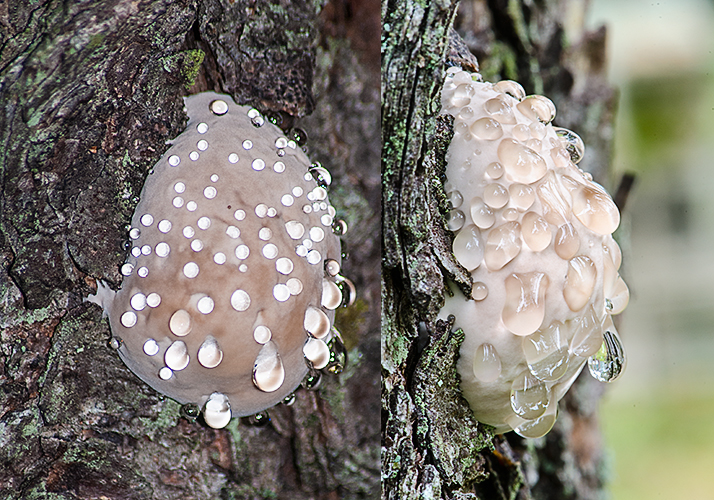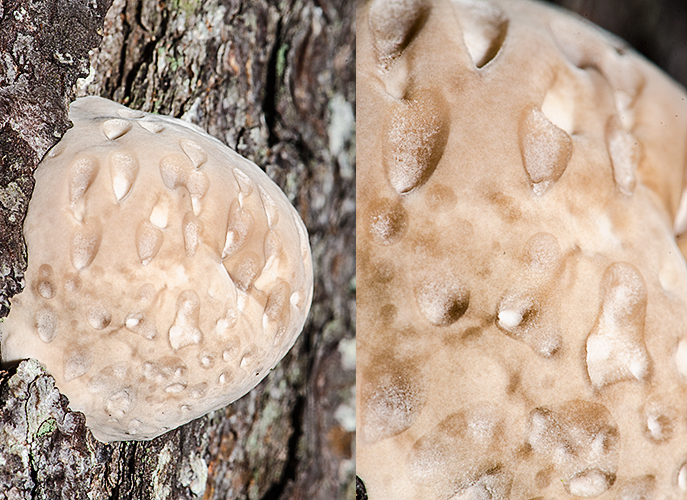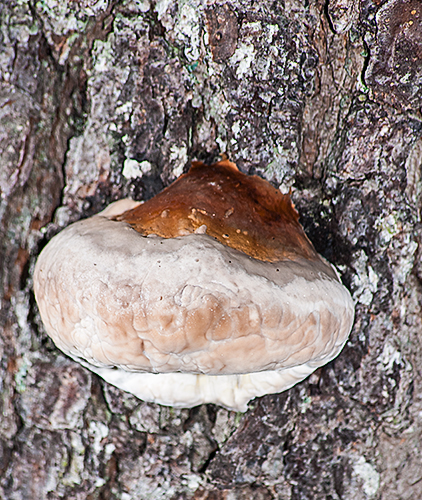After a rainy day last September, on a standing dead Jack Pine (Pinus banksiana) trunk, I notice a cream colored blob that looks as if someone has rolled a chunk of modeling clay and stuck it to the tree. Droplets of crystal clear, tasteless, non-sticky liquid are collected in slight recesses on the surface of the fruiting body. It looks as if the fungus is weeping but I observe no liquid falling. Ten blobs, probably connected by mycelium, grow on this tree but only the four largest weep. Maybe they are the most developed. They vary in color from cream to tan to a faint reddish-brown. A few hours later, the droplets are gone and I can see the surface covered with dry pits. On the following day they are weeping again.
I learned that some fungi regulate their moisture content by secreting liquid via a process called guttation. Several heavy rains had fallen resulting in puddles of water on the Grayling Sand (a rare occurrence). Ample water was in this ecosystem.
I could not identify the fungus until I saw it the following April after it had further developed during the winter. It proved to be a common northern fungi, the Red-banded Polypore (Fomitopsis pinicola). Open pores for sporing on the underside of the fungus were visible.This is a perennial fungi and should continue developing. I hope to make further observations and will report if I do.
Note: These photographs are of the same fruiting body taken in September 2014, October 2014, and April 2015.
Copyright 2015 by Donald Drife
Webpage Michigan Nature Guy
Follow MichiganNatureGuy on Facebook




